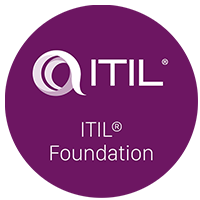To everyone’s relief, the times when doing a transaction at the bank required waiting in the queue are long gone. One of the industries that has undergone the most change recently is financial services. Many banks have started the process of eliminating branches to focus their efforts on digitising additional services since the pandemic.
In parallel, digital-only banks have started to appear, posing a threat to and exerting pressure on conventional financial institutions. Technology also plays a major role for those businesses who want to survive in this fiercely competitive market.
Technology has the power to streamline processes, reduce costs, increase efficiency, and generate a tonne of data for executive decision-making. Data analysis is crucial for business success because it offers insightful information about customers and the market. However, outsourcing is a practical choice because software development can be expensive. Businesses can improve their overall success by utilising technology-enabled digitisation to acquire useful insights into their customers and the market.
How can technology help people make better decisions?
To begin this blog post, let’s define efficient decision-making:
First of all, it suggests that all parties involved—including investors, customers, and organisation members—are taken into account. A comprehensive understanding of everything that is happening and the participation of all parties involved in the decision-making process are essential.
Secondly, that choice is anticipated to lead to a quantifiable improvement in some metrics, such as increased customer happiness, increased revenue, cost savings in specific procedures, etc.
According to a Gartner survey, decision-making has gotten more difficult recently as a result of swift company changes and the need to quickly adjust to competitors and customer demands. Utilising technology, such as data and analytics, helps streamline, accelerate, and decrease errors to handle this complexity. These technological features can aid organisations in making decisions that provide better outcomes.
Data gathering
Data can now be produced from a limitless variety of activities thanks to greater digitisation. Decision-making will be sped up with the help of this information, which can be gleaned from consumer consumption patterns, market trends, competition analyses, and internal organisational data. It will also be vital to have a platform that centralises all the data and streamlines analysis for the decision-maker to deal with a large volume of data.
Innovative ideas
Organisations can gain fresh insights into client needs or even how to boost internal efficiency by using data analytics technologies, which are useful. It will be considerably quicker to execute the changes required to stay ahead of the competition by making it much simpler to analyse market responses and customer feedback. If completely utilised, analytics tools can be a key tool for developing new goods and services, identifying unmet consumer demands, and boosting the likelihood that marketing initiatives will be successful.
Cooperation
As was already mentioned, effective decision-making calls for the involvement of all stakeholders. Software that enables information consolidation and communication across the various teams is therefore crucial to this process.
Asset administration
Digital technologies for managing the organization’s resources, including anything from workers to physical assets, are another essential component. Up-to-date asset information makes it possible to immediately identify equipment failures, preventing wasteful costs and other setbacks. Additionally, it enables the HR division to keep a closer eye on how employees are using their work equipment, which is helpful when working remotely. Platforms like ConiaSoft give you the ability to track each team’s performance more precisely or even more individually in terms of staff management. As a result, you’ll be able to identify trouble areas, determine whether the workload is balanced, whether you need to hire more people and decide whether to train an individual or a group of individuals.
Financial industry software that is most widely utilised
The creation of software for the financial sector is extremely difficult. Due to the importance of the information they manage, financial services applications are required to operate around the clock, provide a fantastic user experience, and most importantly, maintain a high level of security. The most popular software and those that benefit financial services the most are listed below:
Security software is given top priority by the sector to stop cyberattacks and preserve client trust. Banks are replacing financial advice with mobile app recommendation algorithms as a result of automation using artificial intelligence (AI), which enables cost and process optimisation. Because of this, there is less of a need for physical branches and more money may be invested in digital services. Physical branches are no longer necessary because clients can now self-manage their accounts and investments from their computers or smartphones. Due to its availability around the clock and lack of delays in comparison to traditional services, chatbots are also gaining popularity.
CRM and ERP are crucial tools for managing business resources and customer interactions, optimising workflows, and cutting expenses associated with operations. In highly complicated financial markets, analytical tools are essential for assisting customers in making wise decisions and identifying investment possibilities. Software for data analysis is used to produce reports and evaluate investments. To provide a smooth client experience and achieve a competitive edge in the shifting financial landscape, mobile apps are crucial.
According to a poll, almost half of top decision-makers select outside technological solutions for their knowledge. To cut expenses, streamline processes, and increase customer satisfaction, banks are looking for technological solutions. Financial services organisations can gain a lot from using seasoned outsourcing providers, including cost savings, increased productivity, and higher client satisfaction.
By gaining access to top IT personnel, outsourcing, creative solutions and strict timelines are made possible. Enabling vendor development teams to manage rapidly changing dynamics, allows for various projects to be completed without delays. While outsourcing is less expensive than in-house teams, it also speeds up the hiring and hiring process. The quick availability of developers lowers hiring expenses. Additionally, outsourcing provides flexibility by enabling team resizing in response to the shifting demands of the financial services sector. This paradigm enables a workforce that is more flexible and effective.
The five dimensions of optimisation
The journey towards digital transformation is not a goal in and of itself. Instead, it necessitates a well-thought-out strategy that supports better outcomes, more flexible processes, and the fulfilment of new consumption habits (which are becoming more used to digitalization). To help you understand what requirements, objectives, and areas you want to leverage in your firm, we’ll now take a look at a set of questions. The areas of your business where digital transformation may optimise operations, cut costs, and boost efficiency are as follows:
- 1. Effective cost reduction through digitization is made possible by having a clear understanding of the budget and year’s projections. Spending elements including resources, services, hardware, software, IT service charges, and budget evolution are among the factors to take into account.
- 2. For company optimisation, hiring adaptability is essential because needs must be met quickly. To ensure successful hiring, it is crucial to evaluate the skills needed, the length of the hiring process, and the attrition rate.
- 3. Corporate governance is faced with new issues as a result of digitalization, which calls for changes to ensure efficiency, openness, and a digital culture. The ideal roles, responsibilities, profile mix, seniority mix, governance adaption, and compatibility with digitization processes for the organisation must all be evaluated.
- 4. By identifying key services, assuring quality, and gauging customer satisfaction, using data analysis and customer management technologies helps improve services while keeping the emphasis on key business activities.
- 5. A well-planned strategy taking into account company objectives, and human and technological resources is required for cloud migration. Infrastructure expenses, data centre cost-effectiveness, and the services required for the move are all things to think about.
Executives require tools for data collection, consolidation, and analysis to improve efficiency and impact as decision-making in the financial services industry changes. Organisations will gain a competitive edge by adjusting to these developments and having the required technology tools. To deliver quick answers, save costs, and simplify procedures, the best technological talent is required. For additional details, get in touch with us.


















